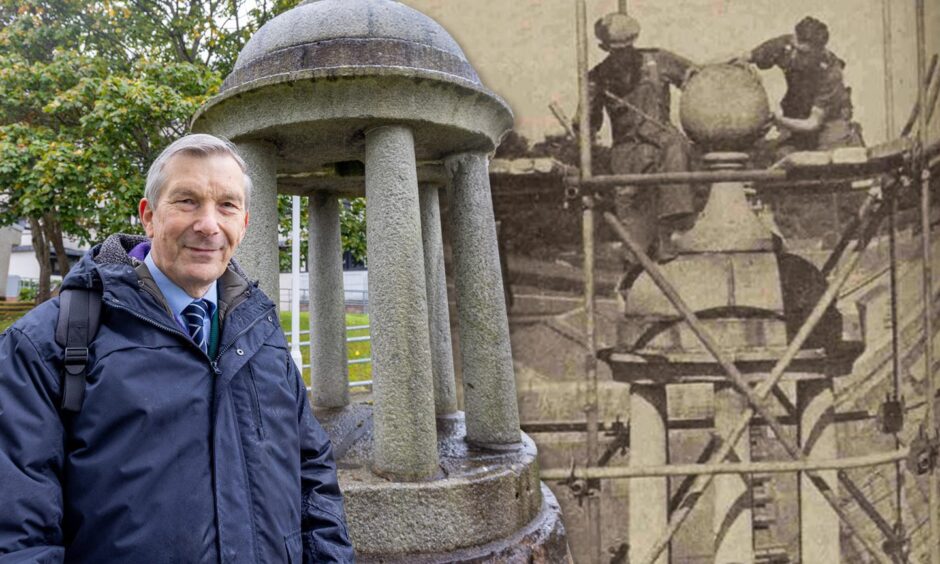
How often do we miss something in our surroundings that’s under our very noses? We rush headlong through the streets with no time to smell the proverbial roses.
Not so Aberdonian Derek Fraser.
The retired hydrologist often strolls around his neck of the woods, which includes Foresterhill campus.
During lock-down it was a favourite haunt, and Derek began to take notice of a mysterious structure inside the old main gate on Cornhill Road, close to the medical school.
The more he saw it, the more intrigued he became, to the point of making the decision to research it thoroughly.
Derek said: “It’s constructed from grey granite, and stands just under 3m high.
“Its circumference is 4m at the widest point.
“There are six granite pillars arranged in a circle, each just over one metre high.
“The pillars are topped by a small dome which in turn is surmounted by a granite sphere.”
Derek noted that the base of the monument is built from a different colour of granite, and seems to be in much better condition than the rest of the structure, suggesting it was more recent, and built as a platform for the main edifice.
Plaque hints at the belfry’s age
There’s also a plaque on one side, which reveals that the structure predates any other building on the Foresterhill campus by at least 200 years.
It reads: “This is the old belfry of Marischal College, removed in 1836 to the mill at Stoneywood, restored to the University through the generosity of Alexander Pirie and Sons and relocated here in 1938.”
The plaque gave some answers, but also raised more questions.
Where is the bell that would once have been housed in the belfry?
And what did Stoneywood paper mill have to do with it?
The years 1836 to 1844 saw the demolition of the old Marischal College.
“A completely new building designed by Archibald Simpson was erected on the same site. This was much more impressive and elegant than the old college that it replaced,” Derek said.
What was the Stoneywood mill connection?
He was keen to find out more about Stoneywood mill connection.
Why was the belfry removed to Stoneywood in 1836 and just over 100 years later returned to the University?
Derek dug into the P&J archives, tracking down an article from the edition of August 17, 1938.
He said: “The article explains that the contractor involved in the demolition of the old Marischal College in the 1830s was also doing work at Stoneywood Paper Mill, repairing the damage caused by the Muckle Spate, or great flood of 1829.
“It goes on to say that the contractor took the belfry to Stoneywood and, at some point used it to embellish one of the buildings there. In other words, an early example of recycling.
“The Press and Journal also carried a photograph in the same day’s edition of workmen removing the belfry from a building at Stoneywood in preparation for the handover to the University.
“So, there we have it. One of the few relics of pre-1830 Marischal College can now be seen in the grounds of Foresterhill Hospital.
Unique and hidden away
“It is possibly a unique part of the history of Aberdeen hidden away in a corner of the hospital grounds.”
The bell which would have been housed in the belfry is missing, presumably removed at some point in the distant past.
Derek has found records in Aberdeen City Libraries digital archive showing sketches of the old Marischal College.
These show the belfry high up at roof level directly above what appears to be a clock.
Derek says he has noticed that the monument is showing signs of its great age and the wear and tear of moving it around.
He said: “It would be good if somebody could take ownership of the monument and give it a clean, tidy it up and repair it.”
Royal connections
He also likes to ponder the context of the monument’s arrival at Foresterhill.
“Its royal connections are worth a mention.
“The hospital was built in the 1930s.
“The foundation stone was laid on 28 August 1928 by the then Prince of Wales who in 1936 became King Edward VIII.
“But he was to abdicate before the end of the same year so for the official opening on September 23 1936, it wasn’t King Edward but his younger brother the then Duke of York who carried out the opening ceremony.
“Within three months he would succeed to the throne himself as King George VI.”
You might also enjoy:
Gone but not forgotten: The story of Aberdeen University’s trailblazing student union
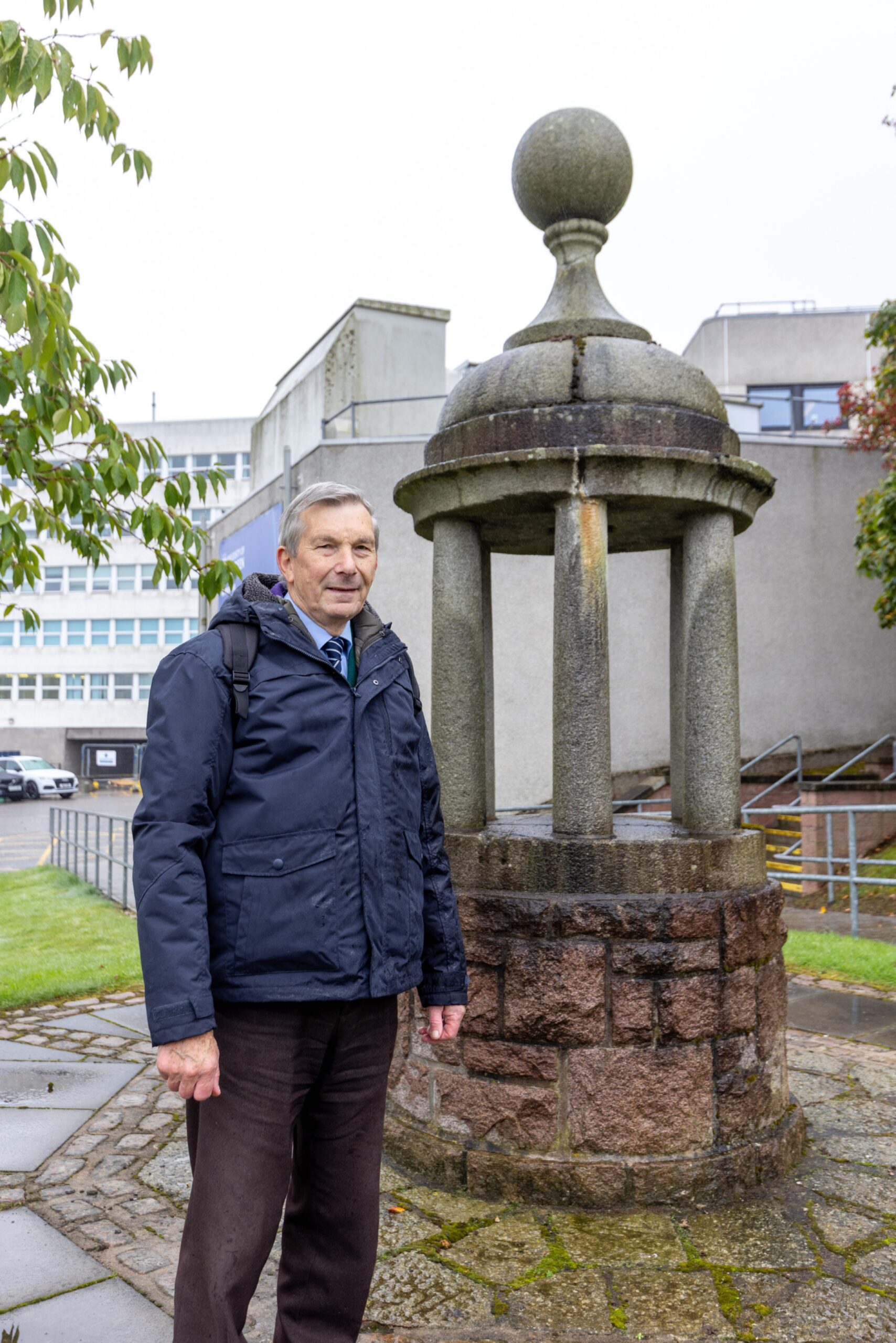
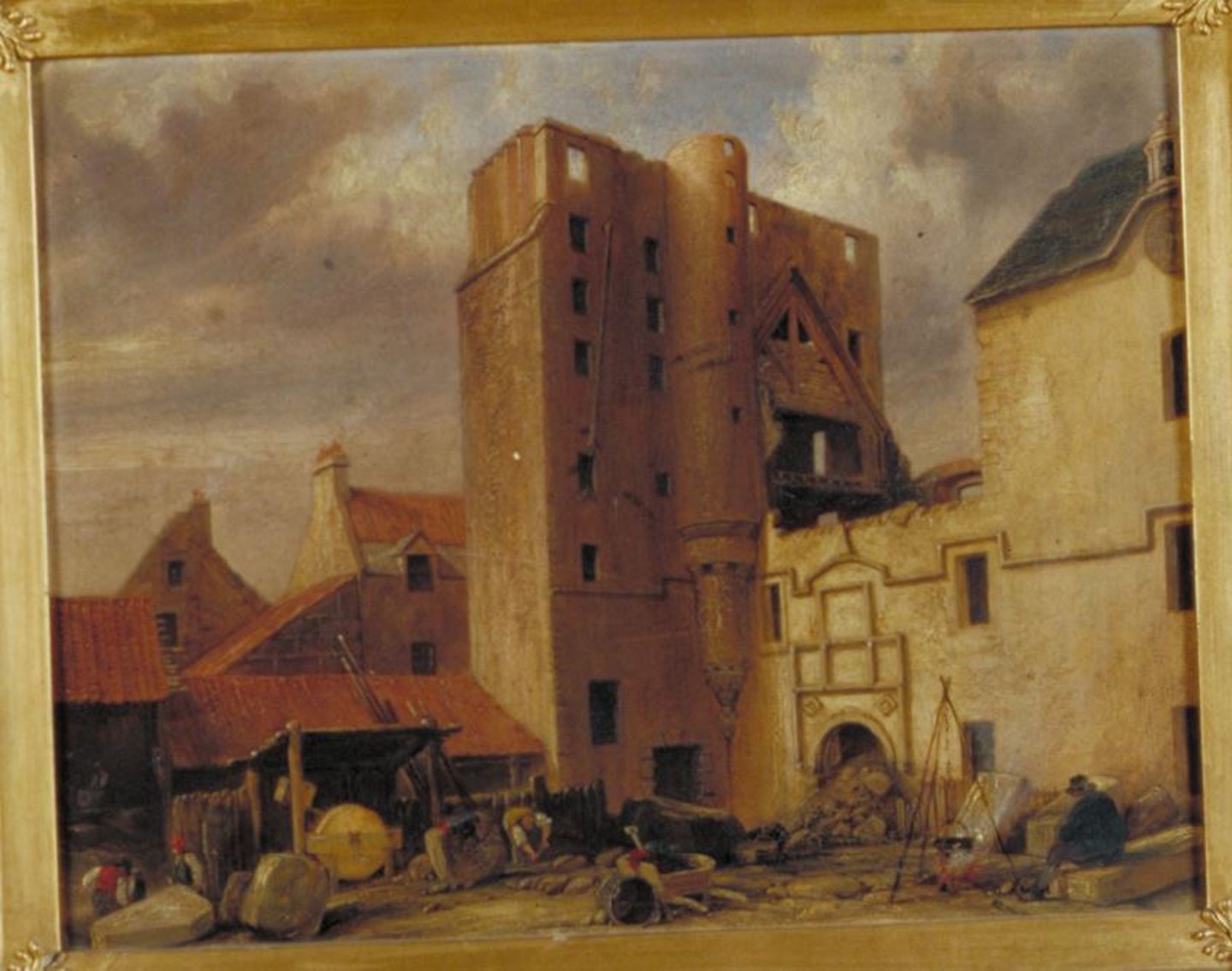
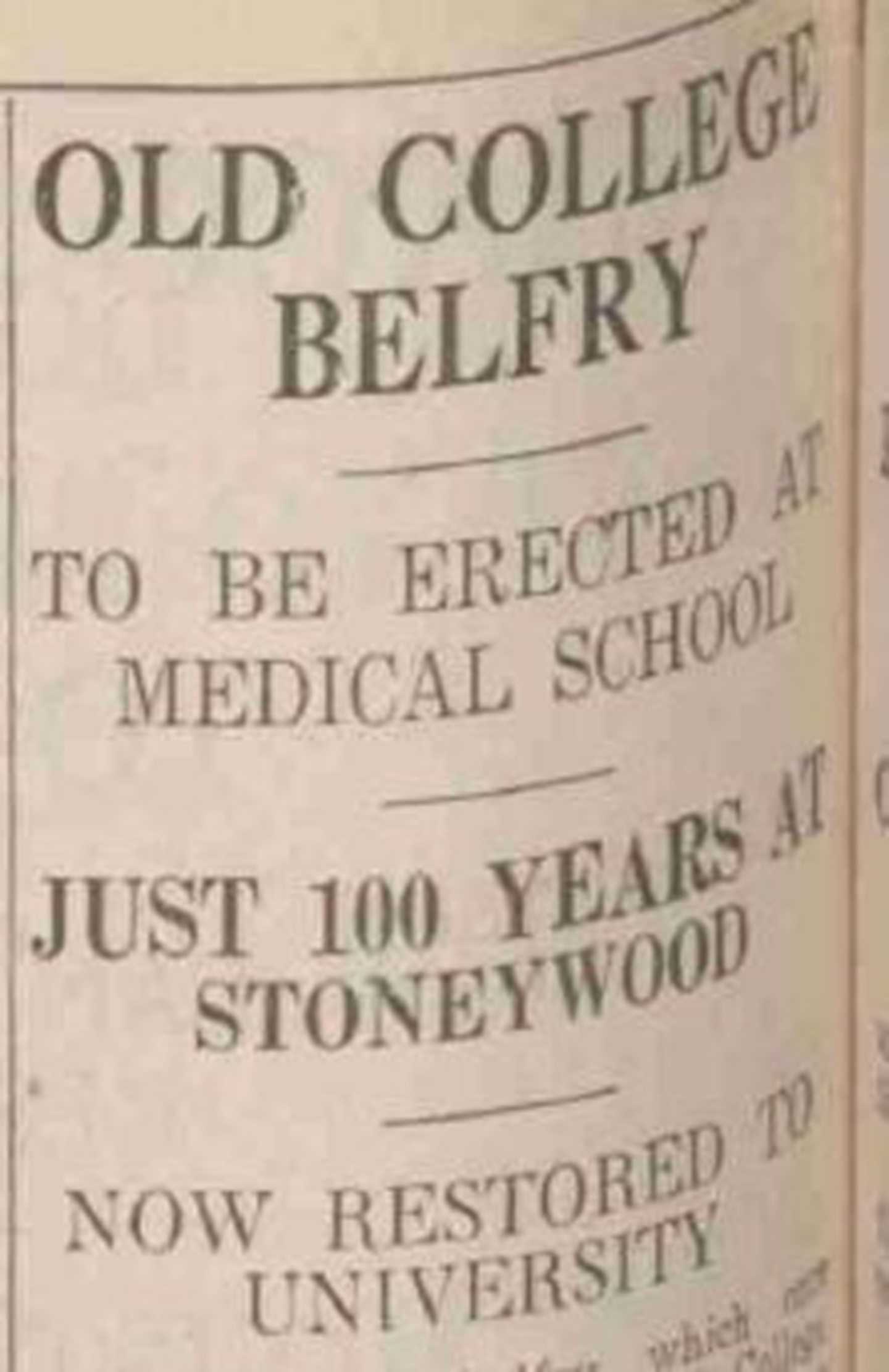
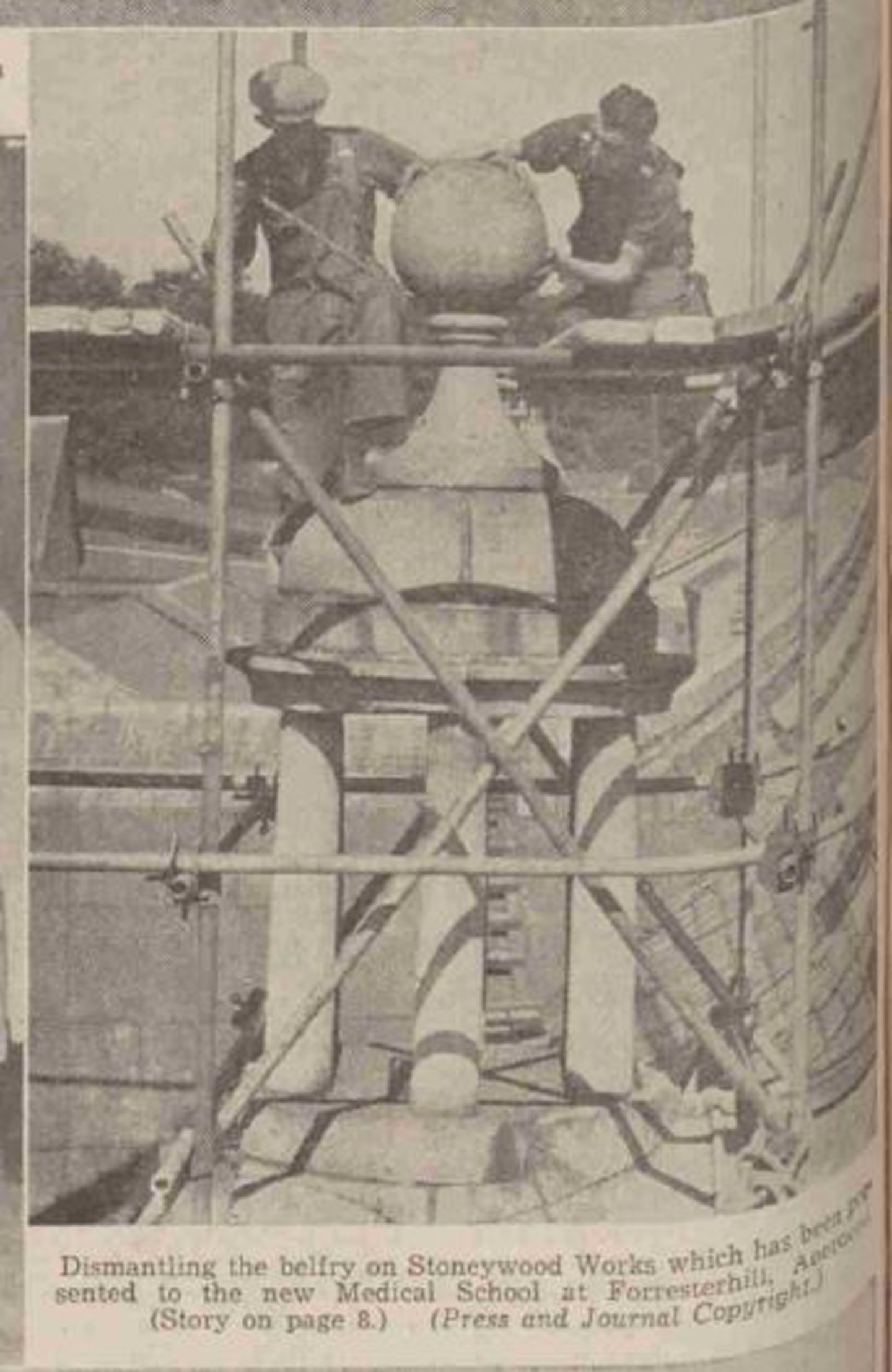
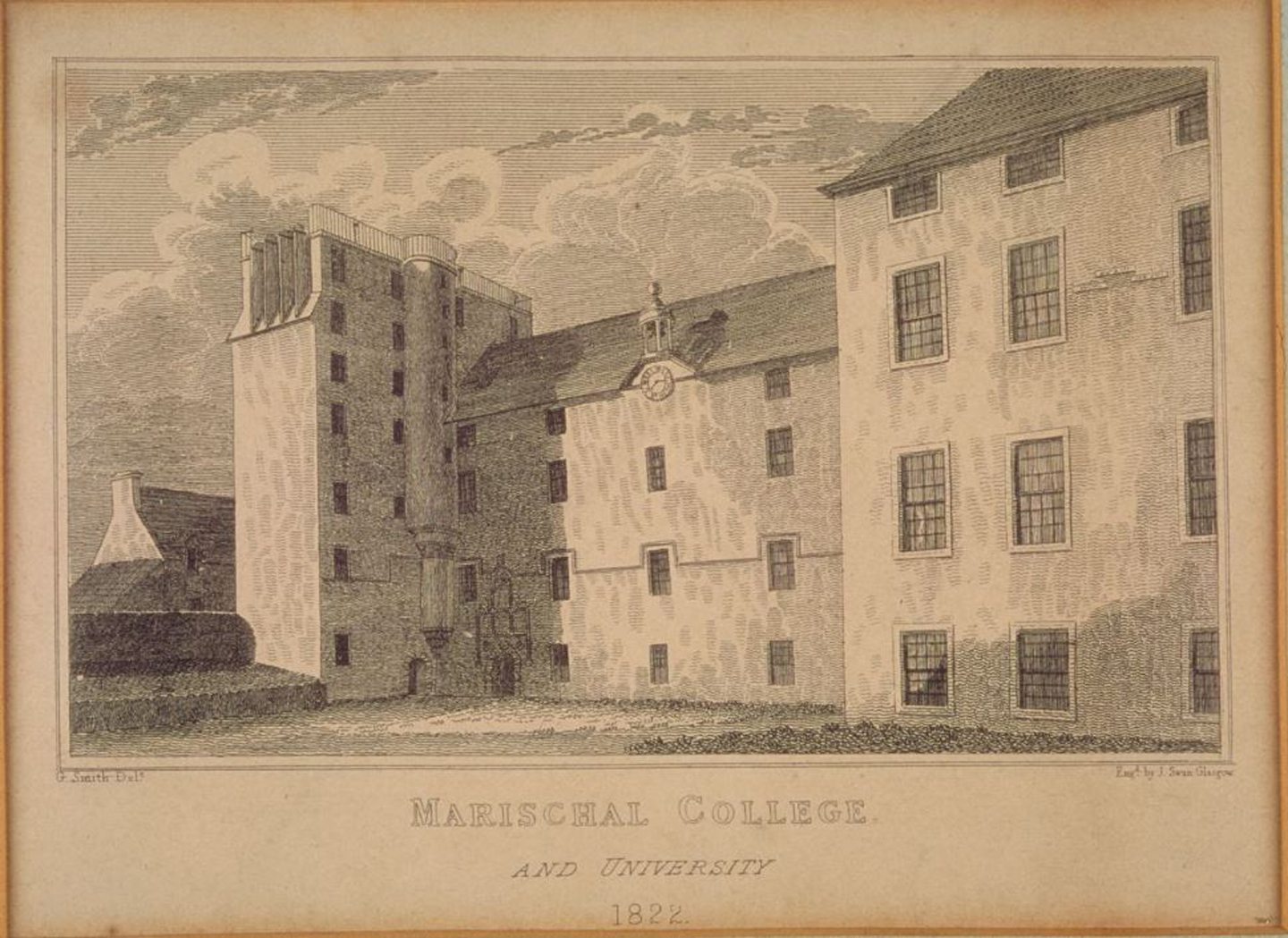
Conversation